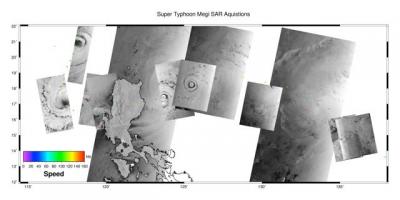ACADEMIA
ONR grant expands University of Miami satellite research
Typhoons, monsoons, internal waves to be studied
The University of Miami (UM) announced that it has received a grant from the U.S. Office of Naval Research to expand its use of SAR (Synthetic Aperture Radar) in the Asia-Pacific Region. The new $1.15 million grant augments a previous $3 million grant received by the University for groundbreaking buoy deployment southeast of Taiwan designed to help better understand the interactions between the ocean and atmosphere during typhoons.
"This generous grant from the ONR will help us to greatly broaden the use of satellite imaging to measure the oceanic response during intense typhoons in the western Pacific Ocean," said Dr. Hans Graber, professor of Applied Marine Physics at UM's Rosenstiel School of Marine & Atmospheric Science and Executive Director of CSTARS (Center for Southeastern Tropical Advanced Remote Sensing). "We hope that this data is valuable enough to improve tracking and make more accurate predictions of large typhoons and help governments and first-responders in preparedness as major Asian population centers respond to natural disaster situations."
Among the activities funded through the new grant are:
Ongoing work on the Impact of Typhoons On Pacific (ITOP) program using UM's state-of-the-art buoys;
Satellite observations of the surface signatures and properties of internal waves to understand their generation mechanisms and propagation paths;
Observations of ocean surface conditions over the coral reefs around the island of Palau, which is vulnerable to tropical storms, floods and bleaching events related to El Niňo;
Planning and preparation for the Bay of Bengal monsoon experiment.
"The work we are about to undertake will provide information that has the potential to impact hundreds of thousands of people, not only in Asia, but in Hawaii and on the west coast of the United States, as well," said Graber.
The UM team consists of Drs. Graber, William Drennan, Roland Romeiser, Neil Williams and Michael Caruso. The group will prepare to deploy buoys and other pieces of scientific equipment to gather information remotely. They will also use CSTARS' expertise in acquiring and processing large numbers of satellite images to study synoptically, and in fine detail, air-sea interactions during monsoon conditions.

